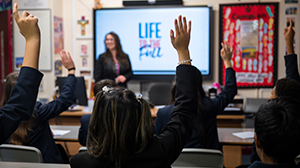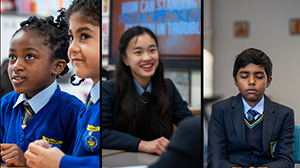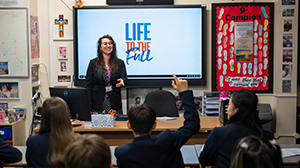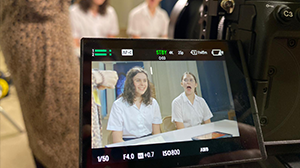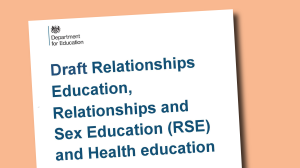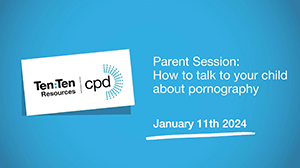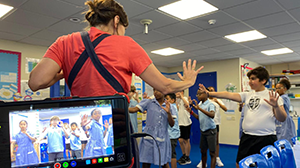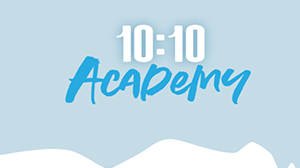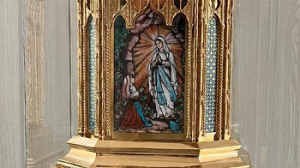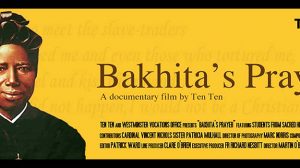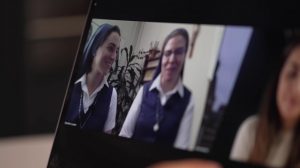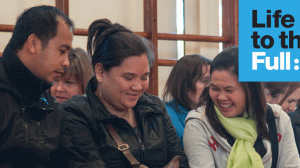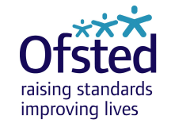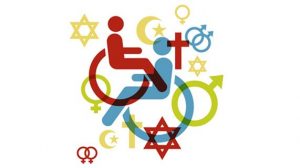Aims
The Voice of the Family investigation into our Life to the Full programme calls into question our presentation of Catholic teaching. This report and response has three key aims:
- Firstly, we want to disprove the three major criticisms by responding to the details highlighted in the report. We will show how, all too often, the examples given involve a misrepresentation of our work. Specific text and images are frequently taken out of context and comments are laced with language intended to shock and appall.
- Secondly, in looking at the points raised, we will share examples of our content, including relevant clips from different sessions, graphics and an explanation of how we unfold Catholic teaching in a clear and compelling way.
- Thirdly, we will share links to new Year 9 content that has not been reviewed in the Voice of the Family report. We are doing this to demonstrate how we continually develop and improve the programme, and part of this involves listening carefully to feedback from stakeholders and critics.
By the end of this report, we are fully confident you will be able to recognise both the quality of what we do and the authentically Catholic approach that we take.
Integrity
The mission of Ten Ten Resources is to be in service to the Church. We have designed our Life to the Full programme to be accessible to all the children within Catholic schools across the UK and to meet statutory guidelines. We are fully committed to Catholic teaching and to communicating it effectively and truthfully.
Given these stated goals, it is a serious matter for Voice of the Family to challenge our integrity by claiming that Life to the Full:
- Repeatedly abandons, subverts or contradicts Catholic teaching
- Undermines the role of parents
- Promotes content that ‘sexualises’ children.
I will be considering each of these claims in turn, following the structure of the Voice of the Family report and dealing with specific criticisms. It is worth noting that we have not addressed every single criticism. We have chosen instead to provide depth in our response so that we can fully show our pedagogical approach to the subject matter.
The following shortcut links allow you to navigate through the report in whatever way you want:
Part One: Fidelity to Catholic Teaching
a) Cohabitation
b) Same-Sex ‘Marriage’ and Civil Partnerships
c) Same-Sex Couples and Adoption
d) Gender and Identity
e) Abortion
f) The Humanity of the Unborn Brought Into Question
g) Contraception
h) Promiscuity and Solitary Sins
Part Two: The Role of Parents
Part Three: The Wellbeing of Children and Young People
Life to the Full for Primary Schools
Life to the Full for Secondary Schools
Conclusion: Changing Hearts and Minds
Feedback
Part One: Fidelity to Catholic Teaching
The Voice of the Family report claims that the Life to the Full programme contradicts, misrepresents or entirely omits Catholic teaching, especially in matters of sexual morality.
a) Cohabitation
It is claimed that we present civil partnerships or other non-marital relationships as ‘largely equivalent options’, giving a ‘false witness to the fundamental nature of Catholic teaching’.
This claim is simply unjust. Marriage is repeatedly described as ‘God’s plan for sex’ across the entire programme and all forms of sexual activity outside of marriage are shown to be contrary to this plan, in different ways and at different times.
However, there are many occasions where our focus is on defining terms and concepts and not on unfolding Catholic teaching about a specific issue. We could, for example, be describing different kinds of family structures that exist in our society or referring to the legal status of different kinds of relationships.
For us, context is important in how we present information and explanation. The way we present Catholic teaching depends on what our focus is at that moment in the session and the moral evaluation of sexual behaviour is not the only focus, important as it is. A common theme in the Voice of the Family report is that it assumes that an unfiltered presentation of the Church’s moral judgement is required in order for the teaching to be faithful.
An example of this assumption is the quotation taken out of context from a year 9 session on Marriage in which a priest states:
‘The Catholic Church is never in the business of saying ‘you must, you should, you ought’.
The Voice of the Family report ignores the context and comments:
‘Taken at face value, this glaringly false witness to the fundamental nature of Catholic teaching may be logically applied to all moral questions covered in the programme.’
The actual context for this is a question about the pastoral approach that might be taken by a priest if approached by a cohabiting couple who were seeking to get married in Church. The response is therefore not only appropriate but pastorally sensitive. It is about the initial conversation that might take place. Here is the phrase in its full context:
Presenter:
‘And what about, you know, a lot of couples that live together before they get married? What do you think about that?’
Response:
‘There are lots of reasons for that… The Catholic Church is never, never in the business of saying ‘you must’, ‘you should’, ‘you ought’, ‘you have got to do this – it’s this way or the highway’. What the Church does is give the invitation, ‘Imagine your relationship lived on this level’. The sacrament of marriage brings God into the picture and it actually takes it to that whole new level.’
This lack of consideration given to the context is a repeated theme in the Voice of the Family report. It leads to a distorted picture which is especially alarming for anyone unfamiliar with our work.
Without that first-hand knowledge, a reader of the report might find it hard to envisage how an actual session unfolds or how carefully we seek to connect effectively and appropriately with our diverse audience of young people. Very often, we do this by first appealing to the qualities of character that are necessary for every young person to grow in maturity, responsibility and moral goodness. Only then do we propose the dimension of faith.
The final 3 minutes of the Year 9 session mentioned are an example of how we do this:
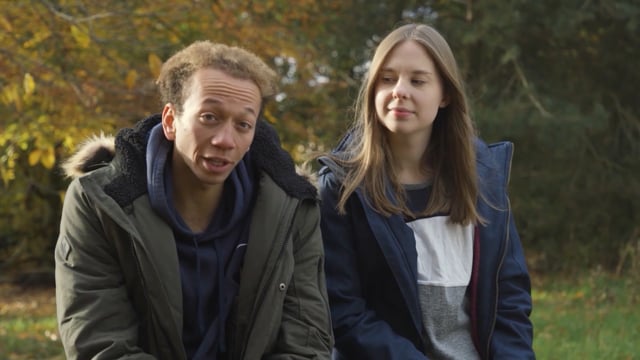
Year 9 Clip - Marriage
Play VideoWe would also like to share with you a full 9-minute clip from our new Year 9 content on ‘Marriage and Commitment’. There are four units and this first unit shows how we start from the ground up, using student voice and scenarios and then move to articulate a vision for marriage that is beautiful, challenging and inspiring.
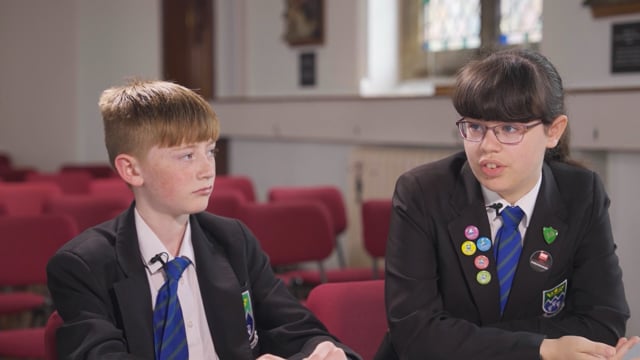
Year 9 Unit 1 - Marriage and Commitment (New Version)
Play Videob) Same-Sex ‘Marriage’ and Civil Partnerships
The Equality Act 2010 is explained with too much ‘approbation’ and Catholic teaching is set aside.
Catholic schools, like all schools, are subject to statutory legislation and thus must have due regard in their policies to the Equality Act. There is no requirement to teach about all of the nine protected characteristics in detail at primary school but this expectation does apply to secondary school. This is why in referencing the Equality Act at primary school age, our focus is on the legal protection of people from discrimination. We barely touch on sexuality and gender reassignment, but because these are briefly mentioned, this is noted as a key decision for teachers. We advise (in the Programme Coordinator manual) that parents are consulted about key decisions before implementing the programme. New statutory guidelines for RSHE, including guidance on age-related content, are pending and we will be looking closely at these to see if any changes will be required to the way we approach this.
To summarise, the purpose of the video, ‘Imagine a World’, which includes reference to the Equality Act, is to explain that it is wrong to bully or unjustly discriminate against people who are different, including those whose views or lifestyle we disagree with and that protecting people from this discrimination is a good thing. It is not about evaluating the morality of non-marital relationships or of gender reassignment surgery which would be inappropriate for this age group and in the context.
Nevertheless, one valid point is made about the phrasing of a sentence: ‘But these protected characteristics are really good’. We accept that this phrase doesn’t fully articulate the intention behind it, and so in our next round of editing, we will change it to, ‘Being protected from discrimination is really good.’ We don’t consider this to be a grave error so will not make the edit an urgent priority.
For full transparency, you can watch the 6-minute video that we created for Year 5 & 6 (ages 9-11) on the link below.
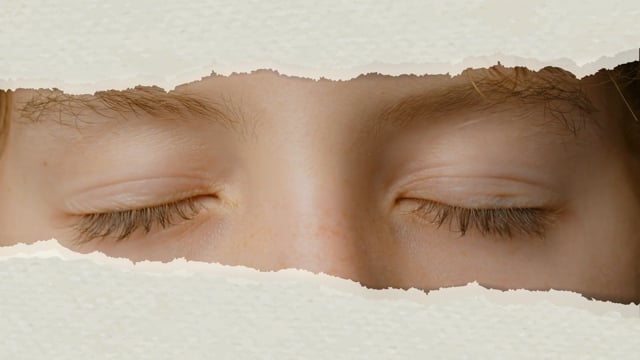
Year 5&6 - 'Imagine a World'
Play Videoc) Same-Sex Couples and Adoption
Referencing the Year 8 session, ‘Wider World’, which focuses on human rights and discrimination, the Voice of the Family report criticises it for being too focused on homosexuals as victims of discrimination and for giving examples of this. It claims that there was no attempt to clarify or defend Catholic teaching (for example in not stating the Church’s opposition to adoption by same-sex couples) and for ‘giving the impression that the only grave sin that the Church associates with homosexuality is prejudice against homosexual people.’ It concludes: ‘Catholic teaching concerning the “grave depravity” of homosexual unions or the “objectively disordered” nature even of the homosexual inclination is passed over in silence.’
The stated aims of this session are described in this way:
Exploring issues of prejudice, discrimination and homophobic bullying, including a Holocaust case study, pupils will learn that we are called to love and respect one another as children of God with value and dignity that far surpasses our culture, race, religion, sexual orientation, choices and attitudes. Pupils will be given the opportunity to examine and commit to changing their own behaviour.
Given the stated aims, it is true that there are some significant elements of Church teaching (for example, about same-sex couples adopting) that are simply beyond the scope of this session. We also made the prudent decision not to use the theologically correct language of the Catechism (‘grave depravity’, ‘objectively disordered’ etc) because as resource providers we decided that this would be neither engaging nor pastorally appropriate. These are the sensitive decisions that we take great care in making, in conversation with our stakeholders, and we stand firmly by these decisions.
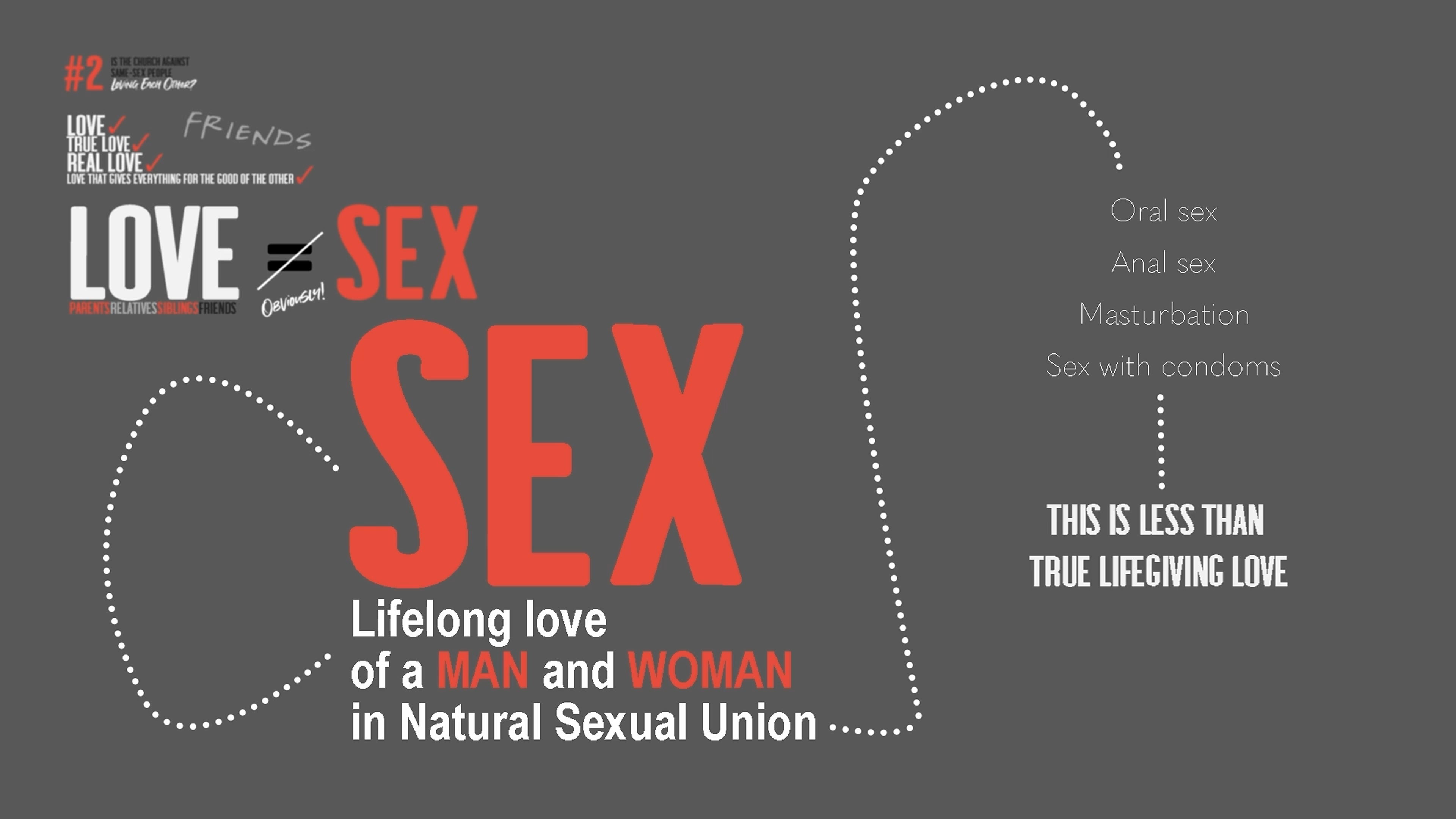
However what is crystal clear from this session is that the Catholic teaching on sex is unpacked and explained, to show that love and sex are not the same thing, that God’s plan for sexual love is for it to take place only within the lifelong love of a man and woman in natural sexual union and that all forms of sex that fall outside of this are at odds with this plan. The graphic on the right, which is expanded upon fully in the session, explains this:
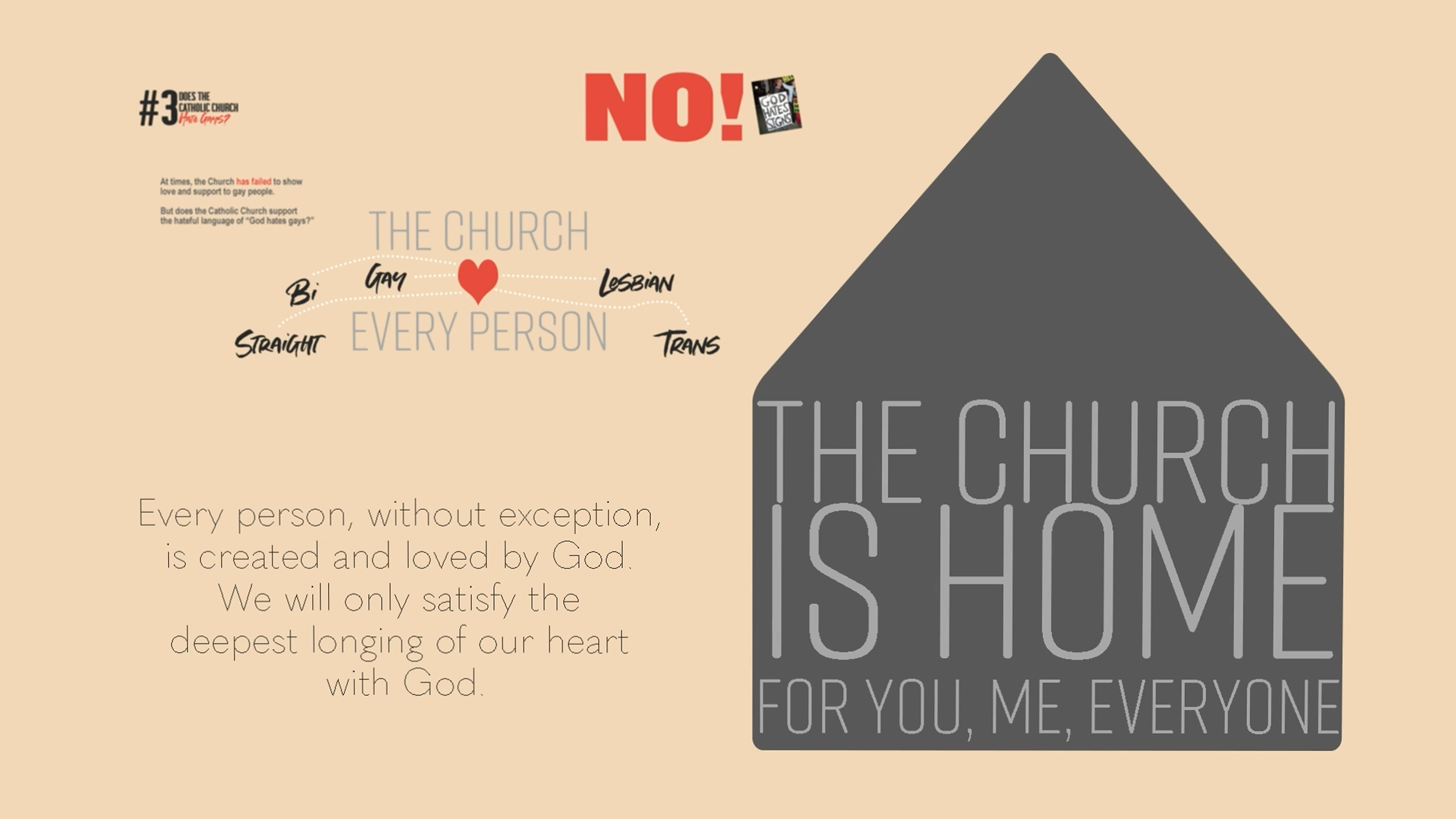
The session ends with a reminder that this is a challenging teaching for everyone and that those who get things wrong are not excluded from God’s love. The Church is home for everyone.
It’s worth remembering that this is a Year 8 session (12-13 year olds) and it won’t be the only time this teaching will be presented and explained. Ten Ten Resources provides a spiral curriculum in which the teaching is returned to and deepened as students mature.
You can watch the relevant 5-minute clip from this session here. It begins with young people voicing their experiences of being bullied in school.

Year 8 Clip - Wider World
Play Videod) Gender and Identity
The Voice of the Family report critiques the Year 8 session entitled ‘Appreciating Differences’, claiming it follows ‘the secular liberal narrative’ on questions of equality between the sexes. The report acknowledges the way this session presents ‘a dialectic comparing the claims of gender idealogues with the scientific reality of biological sex’ and that ‘the argument is naturally on the side of biological reality’ but finds this to be undermined by the phrase ‘There is no blueprint for you’. The report also says the session fails to mention the Church’s teaching about the dangers of gender ideology and the fact that ‘gender transition is morally illicit’.
The starting point for this Year 8 session is to bring some light and clarity by explaining complex concepts and differing perspectives. Its stated aims are:
Building on the teaching that our deepest identity is in God, students will learn about male/female differences including issues such as gender stereotypes, gender identity and gender dysphoria. Students will understand that equality is of great importance, and that we should celebrate our uniqueness. Students will learn about different perspectives regarding gender and transgender identity and they will know that bullying and marginalising others is always wrong because every person is a child of God, worthy of love.
Given the age group of students, the heated nature of discussion around this issue and the fact that the Church’s pastoral response is still in development, we made the decision not to explore moral questions around social transitioning in this session. We fully recognise the importance of these questions and that there are fixed points of reference both pastorally and theologically. We are engaged in the discourse, listening carefully, attending to teachings from the Magisterium and the Bishops, and considering how our content could develop further.
Nevertheless, Ten Ten Resources delivers teacher training through online CPD sessions, conferences and blog articles. An example, in which we draw attention to developing Government guidance and the findings of the Cass report, can be found in this blog article from February 2024:
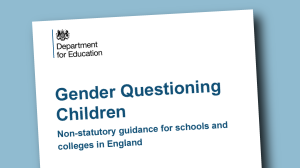
Gender Questioning Children in Schools and RSHE
Exploring the new draft Government guidance
Go to ContentIn the session itself, we clearly highlight the Catholic position that gender and biology cannot be severed from each other. The phrase ‘there is no blueprint for you’ is mistakenly interpreted to refer to an affirmation of gender theory. In context, it is quite the opposite. It is pushing back at the idea that having a ‘non-conforming’ way of experiencing or expressing one’s gender means someone is born in the wrong body. The report also omits to mention the powerful (real-life) personal story that is included in this session where an adult man shares his struggle with gender dysphoria and the journey towards accepting himself as a man – ‘just a different kind of man’.
We end the session with a reminder that: ‘Every person is a child of God and they are worthy of love’. This is, of course, a delicate terrain and one we are trying to navigate with care. We want to affirm the truth that every person can turn to God as their Father and that this puts them in relationship to him as a child. But this does not take away from the need for all of us to come into our identity as adopted sons and daughters of God through baptism.
You can watch that 4-minute clip from the session here:
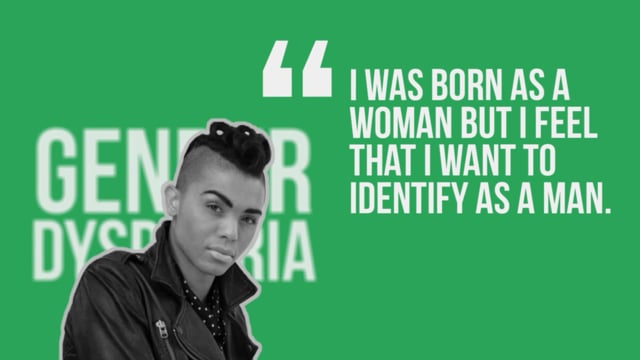
Year 8 Clip - Appreciating Differences
Play Videoe) Abortion
The Voice of the Family report says we present abortion in ‘equivocal moral terms’ by expressing the fact of differing perspectives and encouraging students to develop their own views.
Ten Ten Resources owes its origin to the play ‘Babies’ which has subsequently been made into a short film winning a major award at an international Catholic film festival. The film has also been shown in many pro-life conference settings, including screenings at ‘March for Life’.
Used in one of our Year 10 Cinema in Education sessions, ‘Babies’ is a powerful story that engages the hearts and minds of young people and includes two follow-up sessions for further reflection. In the first of these teachers are clearly guided to state the Church’s teaching as follows:
The Catholic Church teaches that abortion is ‘objectively wrong’. This means that the decision about whether to terminate a life is not down to the subjective opinion of an individual person. In the same way that it would be ‘objectively wrong’ to murder another person, so the Church teaches that it is ‘objectively wrong’ to terminate a life before birth.
But, our conviction is that simply presenting one point of view or a set of reasoned principles is not good pedagogy and not sufficient to break through the preconditioned perspective that many will hold. We believe that using story can be a powerful way to open up honest discussion, debate and reflection about the nature of abortion, the gift of life and as a means of proposing the Church’s teaching.
However, the Year 10 session entitled ‘Pregnancy and Abortion’ is criticised by Voice of the Family for encouraging pupils ‘to develop their own values and attitudes’ as if we were promoting moral indifference. This fails to take account of the progression of this session which invites young people to reconsider their assumptions about both the nature of abortion and about the commonly held belief that there is a ‘need’ for abortion. We do this by sharing stories of those who have chosen abortion, by accurately describing abortion methods, and by hearing from a medical doctor explaining common misconceptions. This is not a moral starting point but it is the starting point for many young people at this age. We are conscious that we are inviting maturing students, aged 14-15, to listen to their conscience and go against the flow of the culture that so often does not acknowledge the right to life of the unborn and does not support mothers in choosing life.
This point is brought home in the closing part of the session:
The Christian belief in the dignity of the human person extends to everyone, including the mother of the baby. Upholding her dignity and supporting her through her pregnancy and motherhood is equally important. This means that if the pregnant mother is your friend or a member of your family, she will need your support to carry the baby to full term and nurture the child throughout life. From this Christian perspective, abortion is objectively wrong and should never be backed, no matter the circumstances. Equally, no matter the circumstances, the mother of the baby should be fully supported as she takes on the responsibility of a lifetime. Both lives matter.
We would like to share this 4-minute clip from the last part of the session which shows how we lead up to this conclusion:
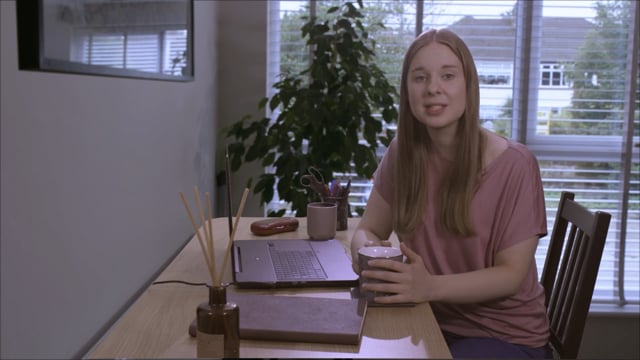
Year 10 Clip - Pregnancy and Abortion
Play VideoCurrently in development, our new Year 10 content, due to be launched in Summer 2025, will be taking a fresh look at this topic in order to present it in an even more effective and impactful way.
f) The Humanity of the Unborn Brought Into Question
The report states that Life to the Full ‘subjectivises the fundamental moral issue of the right to life of the unborn child’.
The idea that human life begins at conception is sometimes described as a ‘Christian belief’ in the programme. As the Voice of the Family report points out, this is a scientific fact on which the Christian belief is based, which is why it is accessible to people of all faiths and none. This is a helpful nuance, one which had already been noted by our team and led to changes in our new Year 9 programme to reflect this. This new version is now being used in schools.
However, this does not justify the conclusion that Life to the Full ‘subjectivises the moral issue of the right to life of the unborn child’. This is a clear distortion of the position we take throughout. Even when the focus of a session is not abortion, we offer frequent reminders of the humanity of the unborn and the way each of us began our existence at conception.
For example, in the Year 8 session ‘Before I was Born’ (criticised in the Voice of the Family report):
- The presenters speak several times in the session about the journey that each one of us makes from conception to birth.
- It covers a married couple talking about their experience of conceiving a child and watching its development until birth.
- It covers what a pregnant mother might do to avoid harming her unborn baby.
- It explains the distinction between miscarriage and abortion, and includes the testimony of someone who had experienced multiple miscarriages.
- Abortion is defined as ‘the deliberate ending of an unborn life in the womb.’
- As a whole, it invites pupils to appreciate the beautiful and fragile gift of life by learning about the journey from conception to birth.
This short clip shows how we evoke a sense of wonder by combining information and the power of personal story:
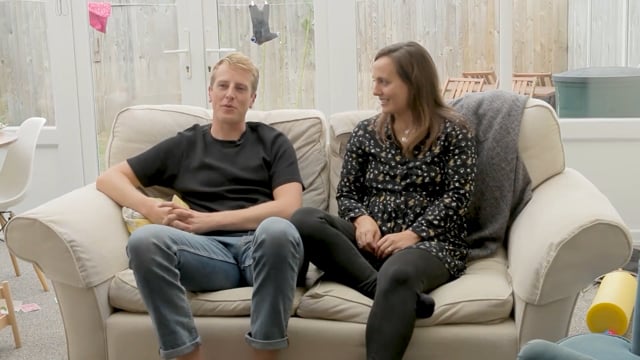
Year 8 Clip - Before I Was Born
Play Videog) Contraception
The Voice of the Family report critiques the Year 9 session on Fertility and Contraception for presenting methods of contraception as ‘morally neutral ways of avoiding a baby’ with ‘emphasis on the merits and demerits of different types of contraception in terms of their efficacy and ease of use’ but lacking a reference to or explanation of the Church’s moral teaching that contraception is ‘intrinsically evil’.
In responding to this criticism, we want first to be open about the challenge of explaining the Church’s teaching in a compelling way to teenagers who are part of a culture where contraception is a morally neutral issue.
We believe there is a place for first presenting the facts, which is also a part of the statutory requirements. This includes showing how contraceptives work, what their actual failure rate is and challenging the idea that any contraceptive method is free of harmful side effects. Moving from this to looking again at why the Church teaches that sex belongs within marriage and why sexual union in marriage using contraception is morally wrong requires a lot of steps that are not easily laid out in a 50-minute session. We chose to end this session with a positive message about saving sex for marriage rather than focus on the Church’s teaching about why contraception is wrong.
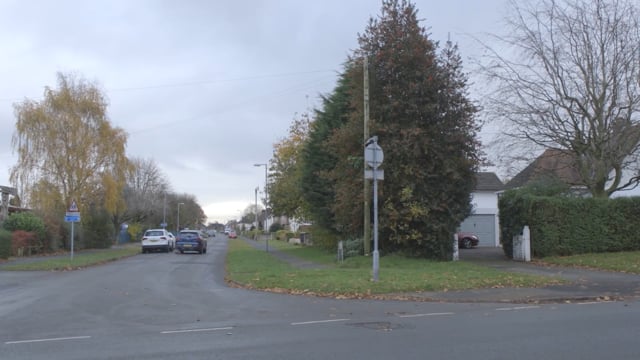
Year 9 Clip - Fertility and Contraception
Play VideoOver the past year, we have carefully reviewed this Year 9 session and reworked the narrative significantly while retaining many of the elements from version 1. In this new version, we clearly present the Catholic teaching that contraception is wrong but we do it in a way that does not assume religious faith. We also take care to situate the discussion firmly in the context of marriage between a man and a woman.
One error that the Voice of the Family report did note (namely a reference to ‘natural contraception’ applied to Natural Family Planning, which of course is not a form of contraception at all) has been picked up in this new version.
Here is a short clip to show how we introduce Natural Family Planning in the final part of the new version of this session:
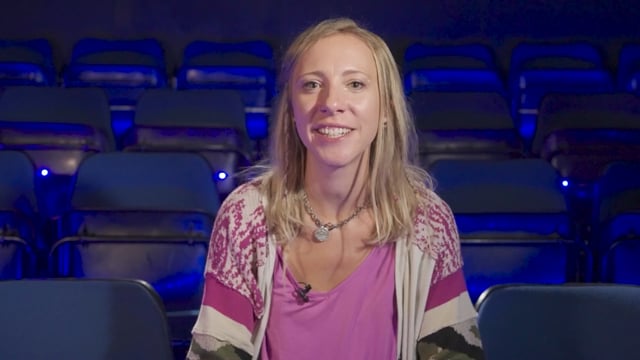
Year 9 Unit 4 - Fertility and Contraception (New Version)
Play Videoh) Promiscuity and Solitary Sins
The Voice of the Family report says that the programme undermines the Church’s moral teaching by not explaining that promiscuity and masturbation are intrinsically disordered acts and are mortal sins.
One of the areas we have taken the most care to address, with both realism and tact, is pornography and masturbation (as well as casual sex). We try to do this in a way that can speak to young people whether they are religious or not and to do so at an appropriate age. This is why we draw attention to the scientific evidence that shows the addictive power of pornography and its harmful impact at a personal, relational and societal level.
When this topic is introduced in UKS2 in the Paradise Street episode ‘Seeing Stuff Online” we show how a father thoughtfully engages with his 10 year old son about watching pornography, helping him to see how easily it tricks the brain. The Voice of the Family report is simply wrong in claiming that this is just ‘pop science’ and that the ‘moral aspect… is directly denied’ since the father clearly states that pornographic images are ‘bad for the people involved and for the people who look at them… Pornography isn’t good. It hurts people. It uses people.’
Similarly, the Voice of the Family report has nothing positive to say about the way we share St John Paul II’s teaching from ‘Love and Responsibility’: that every person is worthy of being loved and not used and that this principle is applied to casual sex and promiscuity. Instead, we are criticised for not describing masturbation as ‘a mortal sin’. While this is accurate, this comment is rather typical of the approach taken by this report where strict definitions are taken from the Catechism, but the Catechism’s own explanatory development is ignored. In this case, the final sentence of CCC 2352 states:
Here is a longer 8-minute clip that shows how we approach this issue in our new Year 9 session ‘Love People Use Things’:

Year 9 Unit 3 - Love People Use Things (New Version)
Play VideoPart Two: The Role of Parents
The second major criticism in the Voice of the Family report is about the role of parents. The claim is that Ten Ten Resources are undermining the primacy of care and responsibility that parents have by pointing children to organisations – specifically Childline – whose content presents serious risk of harm.
We must state with the utmost clarity that the content quoted in this section of the report points to information about contraception, abortion and gender identity which, while available on the Childline site, is never pointed to at any moment in the Life to the Full programme nor do we ever use or employ any of that information.
The occasions when we do reference Childline are associated with protecting children from harm, and in particular parental abuse, which sadly happens. Of course, this will only apply to a very small percentage but given that our programme is undertaken by tens of thousands of children across England and Wales, this number will be significant, and we have a duty to help schools protect their children from harm. Pointing out this avenue for those children at risk is not taking away parental responsibility.
Typically, we provide the following guidance for teachers in sessions that deal with abuse:
Encourage children to think about who they would talk to first, and who they could trust if they ever had something that was bothering them (go through who these might be). If for some reason they feel they can’t, they could always phone Childline for a chat 0800 1111 or contact Childline online.
This guidance for teachers is what has led Voice of the Family to dedicate a significant proportion of its critique of Life to the Full to claiming that we are undermining the primary role of parents.
To the best of our knowledge, there does not yet exist a national Catholic website or helpline that children can access for support and information if they feel unable to talk to parents or other adults about being bullied, about depression or, in the extreme situation where abuse is taking place in the home.
Since this is the only external option available for reporting domestic abuse (beyond school and wider family) our current judgement is that pointing children to Childline has an appropriate place in the Life to the Full programme.
In our review of references to Childline (or any other organisations referred to) we will be considering how to provide fuller guidance to parents and teachers.
Our Partnership with Parents
Ten Ten often speaks about the central role of parents. Parents are the primary educators who should be integrally involved in the lives of their children and in decisions that will affect them. One of the principles of good RSHE is that it should be a partnership between content providers, teachers, parents and pupils.
This is why from the outset we have put parents at the heart of the Life to the Full programme, encouraging schools to actively engage with parents and providing them with different tools to do this:
- The Parent Consultation Tool allows schools to liaise with parents when starting the programme or welcoming new parents.
- The Online Parent Portal encourages parents to view the curriculum, see the topics being covered at different stages of their child’s development and see summary videos about each of the sessions.
- We label specific content as a ‘Key Decision’ to prompt RSE leads in primary schools to consult with parents at the start of the programme for the year
- Full access to all of the programme content is available to parents on request, via their school RSE Lead.
- Free online parent sessions help facilitate good conversations about the challenges of raising children in today’s culture. Recent sessions have included ‘How to Talk to Your Child About Pornography’ and ‘Discussing Smartphones’.
Part Three: The Wellbeing of Children and Young People
The third part of the Voice of the Family report states that the Life to the Full programme ‘breaks down the natural reserve and sense of shame’ of children exposing them to ‘occasions of sin’.
This third criticism is perhaps the most shocking for an organisation like ours, whose mission is to put the safety and authentic human development of children at its heart. Here, we will dissect the analysis in detail with reference first to primary schools, and then secondary.
Life to the Full for Primary Schools
The main target for criticism is our Paradise Street episodes. Featuring carefully-crafted storylines and relatable characters, these have had overwhelmingly positive feedback from both pupils and teachers (as well as parents).
According to Voice of the Family, however, these episodes – in particular ‘Girls’ Bodies’ and ‘Boys’ Bodies’, used in Life to the Full at UKS2 – feature ‘vulgar’ and ‘shocking’ content and ‘lack all sense of propriety and respect between the sexes’. It is claimed that the aim of these episodes is about ‘breaking down resistance to mixed discussions of intimate details of puberty’. Certain of these episodes are said to promote an ‘atmosphere of sexual freedom’ and to expose children to crass and demeaning content.
The way these episodes are misrepresented in this report is staggering. For over 5 years, we have received persistently positive feedback from Catholic primary schools about the efficacy and positive impact of these sessions in the classroom.
Both these episodes deal with great sensitivity as well as honesty about the experience of change and growth that happens in puberty and the insecurities that can be experienced by both boys and girls.
Here is an example of the sensitivity and tact with which the topic of girls’ development and bras is handled.
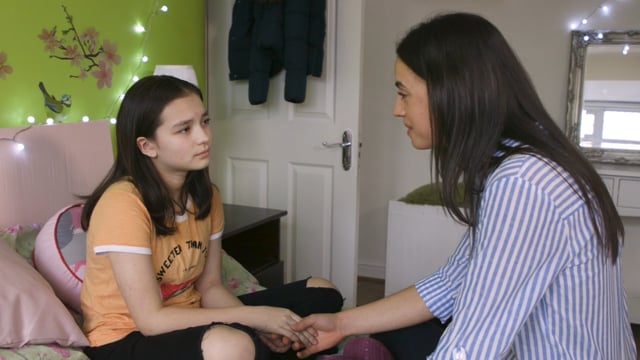
Clip from 'Girls' Bodies'
Play Video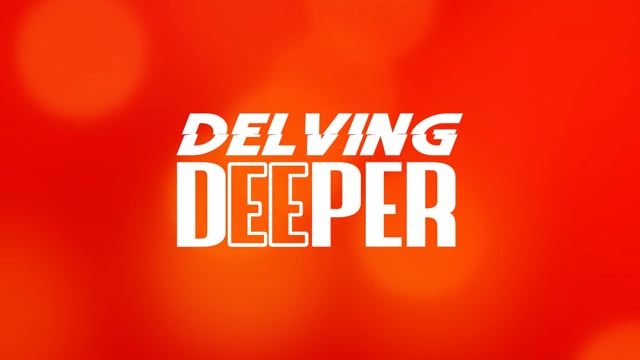
Delving Deeper - 'Boys' Bodies'
Play VideoYou will have seen how we approach these matters with a sensitivity to the lives of children at this stage of development, with a necessary honesty and a warm appreciation of the goodness of the body and of sexual development.
Here are some important points of note:
- The RSE in Catholic Schools CES Guidance (2020) states:
- When to introduce sessions around puberty and sexual development is an important decision for schools and it would be good practice for schools to consult with parents about this.
- The National Curriculum for Science includes teaching about reproduction, conception, fertility and the menstrual cycle as well as the physical and emotional changes that take place in puberty in years 5 and 6.
- We suggest that schools might consider facilitating content about puberty and changing bodies within single-sex groups and have added this note to the relevant web pages and lesson plans for our programme.
Life to the Full for Secondary Schools
In the third part of the Voice of the Family report, several of the Year 9 episodes are criticised as being (in places) ‘offensive’, ‘blasphemous’ and lacking in ‘good taste’ with a range of examples given.
We freely acknowledge, that not every creative decision we make is going to fit with the taste of every person, and there are always aspects we would like to change and improve. This is an ongoing process. But terms like ‘blasphemous’ paint a picture of our programme that is simply not merited and which we don’t recognise from the extensive feedback we receive from teachers, parents and students.
In Autumn 2023, we invited all of our subscribing Catholic secondary schools to participate in a review of Life to the Full and also visited a number of schools to see the programme in action and speak to students and staff. We widely and publicly presented our review report. From this analysis, we know that some of our content has jarred for different reasons. We also know that integrating the voices and views of children and young people is an essential part of drawing them into this ongoing conversation.
You can view our Key Findings on the link below, which highlights the positives, the negatives and the ideas for improvement that we gleaned from this process:
Drawing on this review, we have developed, produced and launched a new version of the Year 9 programme.
- Available now to all subscribing schools, the new Year 9 content brings a new depth and rigour to our presentation of the Catholic understanding of human sexuality and of human dignity.
- Version 2 also introduces four new presenters, student voice contributions throughout and a carefully planned journey through each session that illuminates key principles of both reason and faith through story, drama and personal testimony.
- You will have already seen examples of this new Year 9 content earlier in the report.
Other episodes were criticised in this part of the report by Voice of the Family for promoting an ‘atmosphere of sexual freedom’ and exposing children to crass and demeaning content.
We want to finish our analysis by focusing in some detail on two of these episodes – one from Year 7, the other from Year 8, to show how wide of the mark this assessment is.
Analysis of Year 7 Session 4: Where Do We Come From?
Here, we present a rationale for the journey of the session, responding to Voice of the Family criticisms in turn, followed by the actual video of the content so you can see it in context.
The stated aims of this session are:
‘To help students: understand sexual intercourse within a scientific, moral and religious context, leading them in turn to a richer understanding of human reproduction, including fertility and the menstrual cycle.’
The corresponding teacher session plan can be downloaded here:
The focus of our analysis is Units 3, 4 and 5 of the session which was heavily criticised by Voice of the Family: ‘The whole purpose of the video appears to be to break down the children’s natural reserve about sexual matters.’
Unit 3
The session is led by presenters Mairi and Nathan. It begins with a student voice question. ‘How are babies made?’ which the Voice of the Family report implies is inappropriate.
However, the responses are neither crude nor inappropriate for Year 7 pupils who will be taught about ‘the facts of life’ in science lessons at this time.
Voice of the Family then describes how ‘The Ten Ten presenters ‘break into song, singing ‘Let’s Talk About Sex, Baby’.
In fact, the context for this is Mairi saying:
‘Look at all the babies aren’t they adorable… Right, let’s talk about sex.’
Nathan then breaks into song ‘Let’s talk about sex baby’ for a total of 4 seconds. There is then a montage of the first lines of pop songs about sex with onscreen lyrics which lasts for 14 seconds. A short animation that clearly but sensitively explains the way sex leads to conception and eventually birth.
One graphic in the animation is described in the Voice of the Family report as ‘text and design elements designed to be visually suggestive of erection and ejaculation’. Despite what the report claims, there is no portrayal of any image in the programme that is suggestive of intercourse.
Following the animation, Mairi and Nathan explain:
‘Sex between a man and a woman – sexual union – unlocks an unbelievable power – the power to become parents together… the possibility of having a baby – and this means the couple have a huge amount of responsibility. ‘
Nathan then sings:
‘Let’s talk about sex baby. Let’s talk about responsibility’.
And Mairi notes:
‘You don’t hear a lot of pop songs with lyrics like that do you?’
The beginning of the next unit features pupils considering whether any pop songs talk about sex well. They comment that almost always lyrics about sex are ‘rude’, ‘inappropriate’, ‘not good’. In other words they speak the truth!
We consider this way of engaging with the culture to be an important part of our approach. As the CES Guidance document states:
You can watch the full unit sequence in this clip:
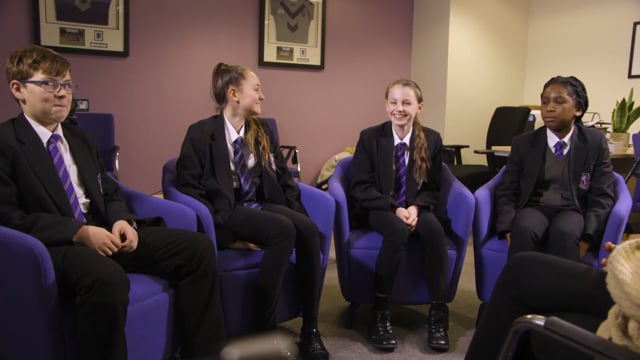
Year 7 Session 4 Unit 3
Play VideoUnit 4 and 5
After the student voice section described above, Unit 4 moves to consider a description of the menstrual cycle. The setting for this is the Velodrome to represent the continuous cycle of fertility. Mairi explains how the lining of the uterus becomes thicker in the run-up to ovulation. Nathan explains:
‘It’s like a cradle because the woman’s body is getting ready to welcome the newly formed little human life.’
And Mairi comments:
‘And that’s where each of us began our existence.’
The relationship between fertility and the gift of life is clearly made:
‘Remember that the purpose of puberty is to mature our bodies into adult bodies. We are maturing towards becoming capable of becoming a mother or a father. And as our bodies develop in maturity, so should our character.’
The final part of the session Unit 5 ends with Nathan talking about how even if children don’t know both their parents, they aren’t a mistake, they can have confidence in the love of God their Father.
Mairi then explains:
‘Sex bonds a couple together as they lovingly give themselves to each other and part of this gift of self is the potential to be a parent through their bodies uniting together. And so when the Church says that sexual union should be kept for a married couple, that is because it recognises that the loving family unit is the best place to bring up children.’
We then move to Mairi interviewing a married couple about waiting for marriage before having sex. The husband says:
‘Love is worth the wait. If I can’t say ‘no’ my yes means nothing’.
The Voice of the Family report critiques this explanation for failing to mention ‘the ends of marriage’ which it argues leaves the teaching on sex and marriage ‘open to question’. It also claims the lesson ends ‘on a decidedly ambiguous note’.
In fact, this is not the end of the lesson. We see the married couple with their children and the text of Psalm 139 is shared.
And the final scene of this session (though it has a humorous element) has Mairi offering a challenge:
‘The next time you hear a song or watch a video that says something about sex, I want you to ask yourself: ‘Does it explain the real power of sex… babies and bonding… the gift of love and the gift of life.’
Watch the full sequence as described above here:
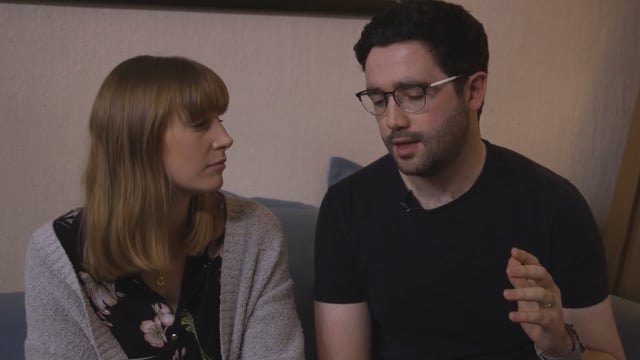
Year 7 Session 4 Units 4&5
Play VideoAnalysis of Year 8 Session 3: Feelings
We will briefly present and then respond to the Voice of the Family criticisms of this session, followed by the key video content so you can see it in context.
Here is how the aims of the session are outlined:
This session explores God’s wonderful gift of sexual attraction, which requires self-control, mutual respect and patience to manage well. Students will also learn that God has a plan for sex: that our deepest drive to love and be loved is met through sexual union which is total, faithful and open to the precious gift of life.
The corresponding teacher session plan can be downloaded here:
The first comment by Voice of the Family is that the session uses “crude and immoral examples such as ‘seeing a naked body you’re attracted to’.”

In our view, neither the comment nor corresponding graphic is crude or immoral. Instead, this is a discreet way of referencing the fact that (as a January 2023 report by the Children’s Commissioner found) over half of children are likely to have seen pornography by the age of 13. The words are voiced by a presenter and accompanied by the simple graphic shown here.
The next unit addresses the question of when might be the right time for sexual intimacy. Voice of the Family considers this to be wholly inappropriate. But opening up that conversation is intended to set the scene for a recognition of different views widely shared in our society, before presenting the Church’s teaching.
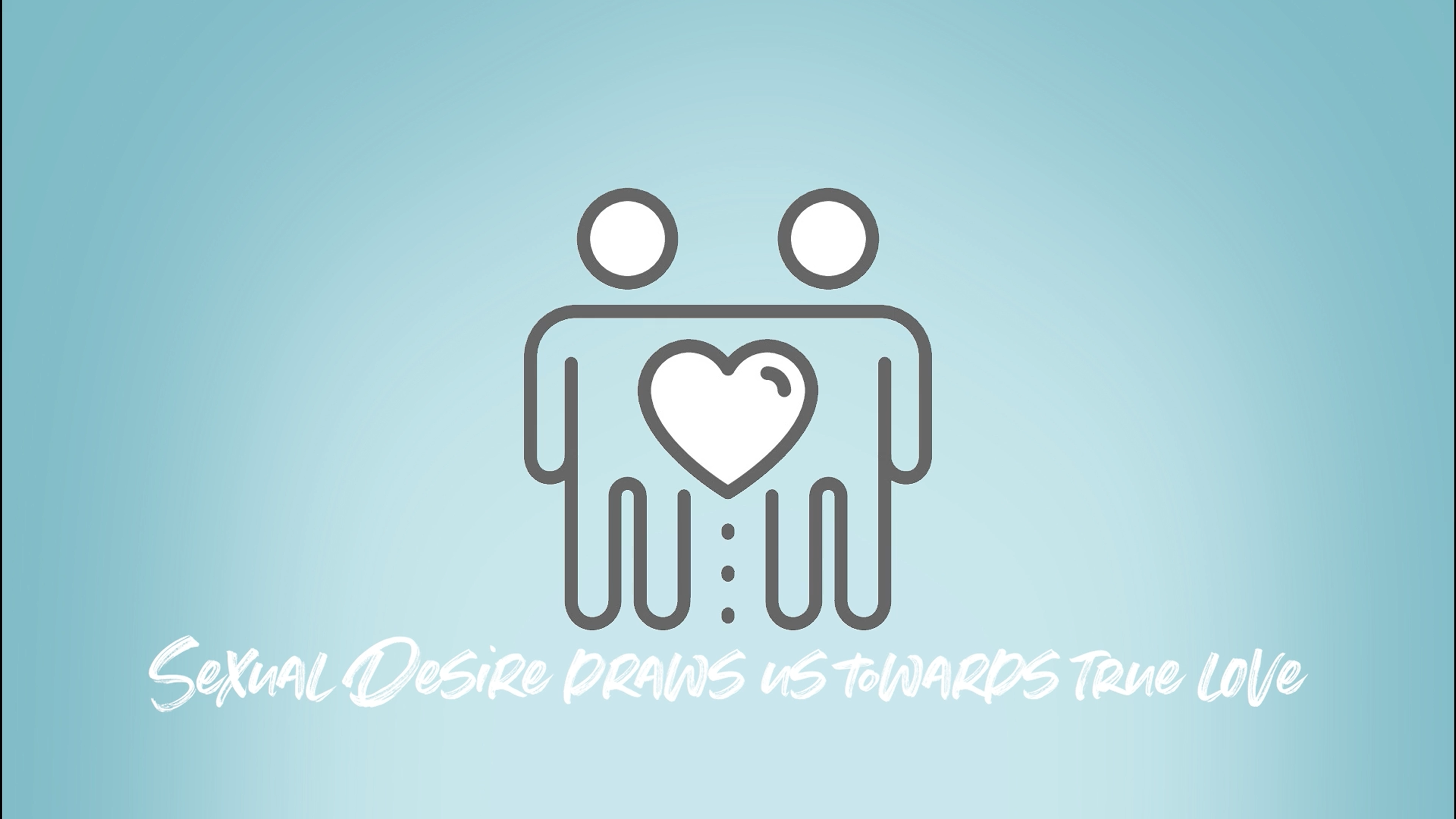
The starting point for that teaching is that sexual desire has a meaning and purpose in God’s plan – to draw us not towards self-satisfaction but towards self-giving and true love. This is what another simple graphic used in the course of this presentation is meant to represent:
We tend to agree with Voice of the Family that we could consider changing this graphic, but not that it ‘naturally leads towards a debased interpretation’ especially in light of the unfolding of Christian teaching about marriage that follows.
‘But when we just seek self-gratification, the true purpose for sexual desire is lost from view. God’s plan for sex is about something greater. It is a sign and a symbol of the most sacrificial love… Our deepest desire to love and be loved is met through sexual union which is total, faithful and is open to the gift of new life. This is God’s plan for sex – for it to be in a loving marriage between a man and a woman who are committed to each other for life and open to becoming parents together.’
Mairi and Nathan then acknowledge that marriage will feel a long, long way off for this age group. In the meantime, they advise students to develop the qualities of character that they would like to see in their future self – self-control, patience, mutual respect. Mairi explains the principle that we should never see another person as an object, but as a human being created to love and be loved.
Watch the full sequence as described above here:

Year 8 Session 3: Feelings
Play VideoIn the final part of the session Mairi shares insights on how her views about sex were challenged and changed before inviting students to pray so as to align their hopes and desires with God’s plan for sex:
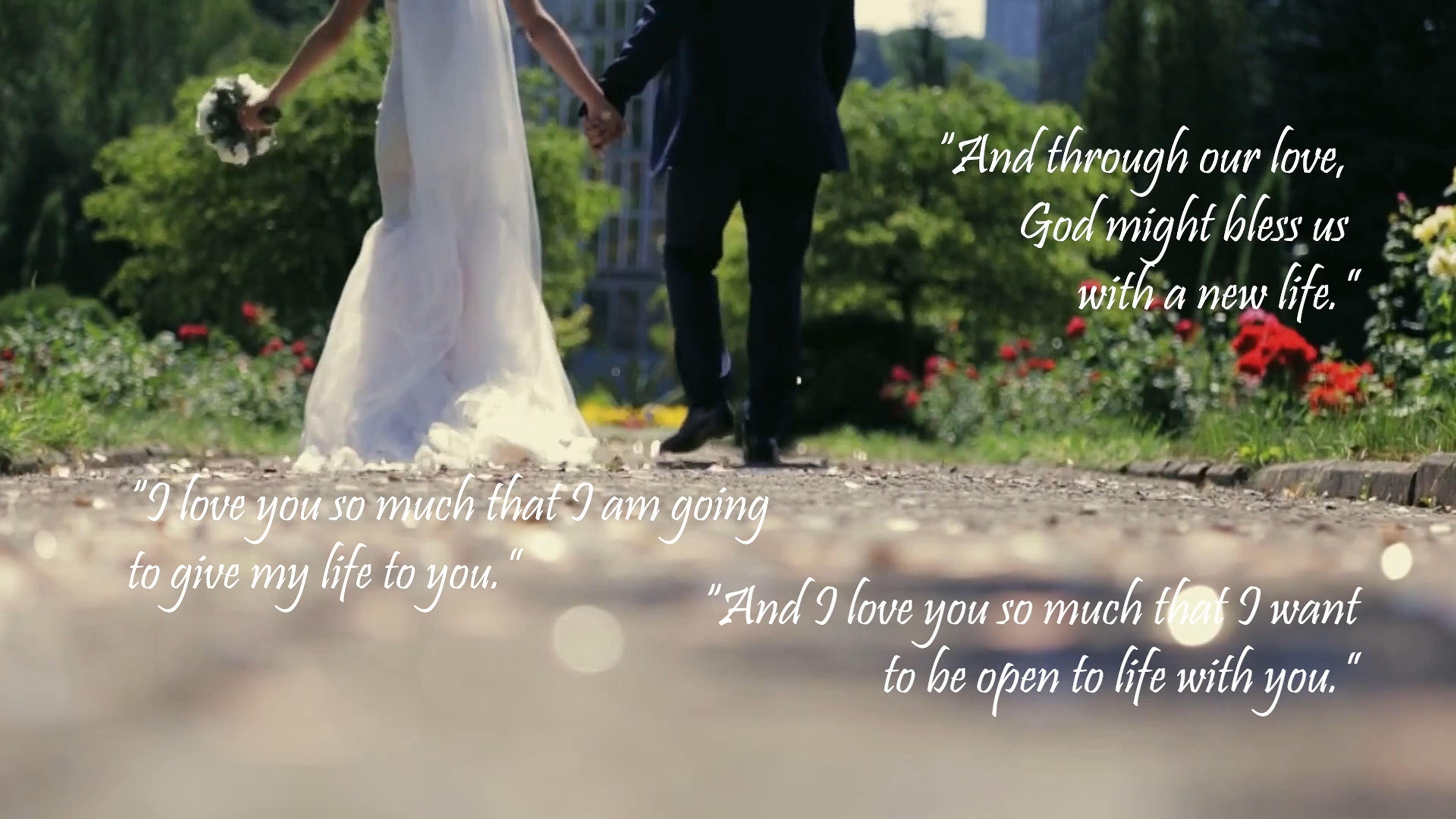
‘Lord God, It is so beautiful to be wanted, loved and cherished. We all need that in our lives. Often we get confused about how and where to find it. We are impatient. We are selfish. Help us to set our hearts on aligning our sexual attraction to your plan so that we may know what true love is, and settle for nothing less.’
We have shared video content alongside our analysis of these two sessions so our stakeholders can judge for themselves the veracity of the criticism.Perhaps there are elements here that someone might consider could be done differently or better. In fact, that is surely going to be the case.
But we find it very hard to understand how the Voice of the Family report can make the claim that ‘vulgar content is used to break down a child’s natural resistance to classroom discussion of intimate personal matters’ or that the programme ‘recklessly exposes children to occasions of sin.’
Conclusion: Changing Hearts and Minds
The power of story is central to our work. Story allows us to explore different characters and attitudes – yes, even those that are at odds with the Catholic vision for love and sex. It enables us to feature voices or behaviour that can be a focus for reflection and criticism. If we totally ignore these viewpoints we are in danger of alienating the very audience we want to reach causing children and young people to feel ignored, patronised or manipulated.
But presenting ideas through story and scenarios and bringing a more accessible mode of explanation to children and young people carries some risks. Ambiguity is possible. What seems compelling and effective to one person may seem in poor taste to someone else. Wouldn’t it be better to just explain the facts or present the moral teaching, point by point?
At Ten Ten Resources, we do not think this approach is suited to the diversity of our Catholic schools. We want to speak in the language of not just the Catholics or Christians in the room, but also those who have no religion or religious background. So we begin with the language of reason and experience without ignoring the language of faith. We believe in trying to find multiple ways of connecting with children, with young people, so that they can be receptive to the deeper truths we want to share.
Achieving this requires difficult judgements about what ideas, information or teaching to share at what point and in what way in the curriculum or in a sequence of sessions. As a team, we often go back and forth weighing up the way a dialogue is phrased, the use of an image or graphic, the content of a story or scenario or whether a particular moment is the right moment to unfold Catholic teaching and the reasons for it.
We don’t pretend to have got everything perfectly right and we welcome comments that can help us look at our content with fresh eyes, whether we decide to make any changes or not.
However, we strongly feel that the Voice of the Family report is deliberately designed to frame our work in as negative a light as possible. It feels as if we are being painted as the enemy of Catholic teaching and of Catholic evangelisation, whereas the opposite is true.
We are completely committed to the faith and teachings of the Catholic Church and our goal is to reach all of our audience; that includes, first and foremost, children and young people. But is also includes teachers and parents – whether they are practising or not, Catholic or not, Christian or not, believers in God or not. We do this through quality digital content that includes powerful stories, live-action drama, dialogue, questioning, student voice and, of course, teaching.
We take this approach because we want to change hearts and minds through creative Catholic content that informs, challenges and inspires.
We want, especially to meet children and young people where they are at and, in creative and engaging ways, help them to discover the beauty and truth of the Catholic vision.
As we recommit ourselves to that mission, please continue to keep us in your prayers that we may allow God to lead us (and through our work to lead others) according to His love and His truth.



